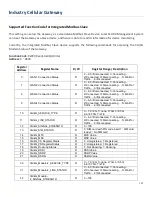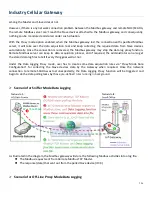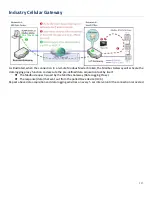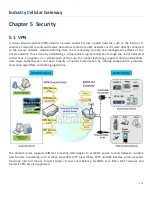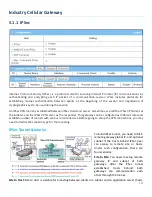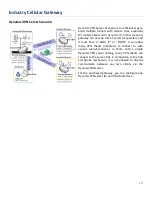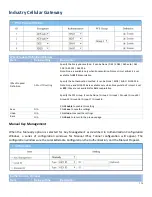
Industry Cellular Gateway
As in the diagram, the clients behind the M2M gateway can access to the host "Host-DC" located in the
control center through Site to Host VPN tunnel.
Host to Site:
On the contrast, for a single host (or mobile user to) to access the resources located in an
intranet, the Host to Site scenario can be applied.
Host to Host:
Host to Host is a special configuration for building a VPN tunnel between two single hosts.
Site to Site with "Full Tunnel" enabled
In "Site to Site" scenario, client hosts in remote site can
access the enterprise resources in the Intranet of HQ
gateway via an established IPSec tunnel, as described
above. However, Internet access originates from
remote site still go through its regular WAN connection.
If you want all packets from remote site to be routed
via this IPSec tunnel, including HQ server access and
Internet access, you can just enable the “Full Tunnel"
setting. As a result, every time users surfs web or
searching data on Internet, checking personal emails, or
HQ server access, all traffics will go through the secure
IPSec tunnel and route by the Security Gateway in
control center.
Site to Site with "Hub and Spoke" mechanism
For a control center to manage the secure Intranet
among all its remote sites, there is a simple
configuration, called
Hub and Spoke
, for the whole
VPN network. A Hub and Spoke VPN Network is set
up in organizations with centralized control center
over all its remote sites, like shops or offices. The
control center acts as the Hub role and the remote
shops or Offices act as Spokes. All VPN tunnels from
remote sites terminate at this Hub, which acts as a
concentrator. Site-to-site connections between
spokes do not exist. Traffic originating from one
spoke and destined for another spoke has to go via
the Hub. Under such configuration, you don’t need
to maintain VPN tunnels between each two remote
clients.
216

